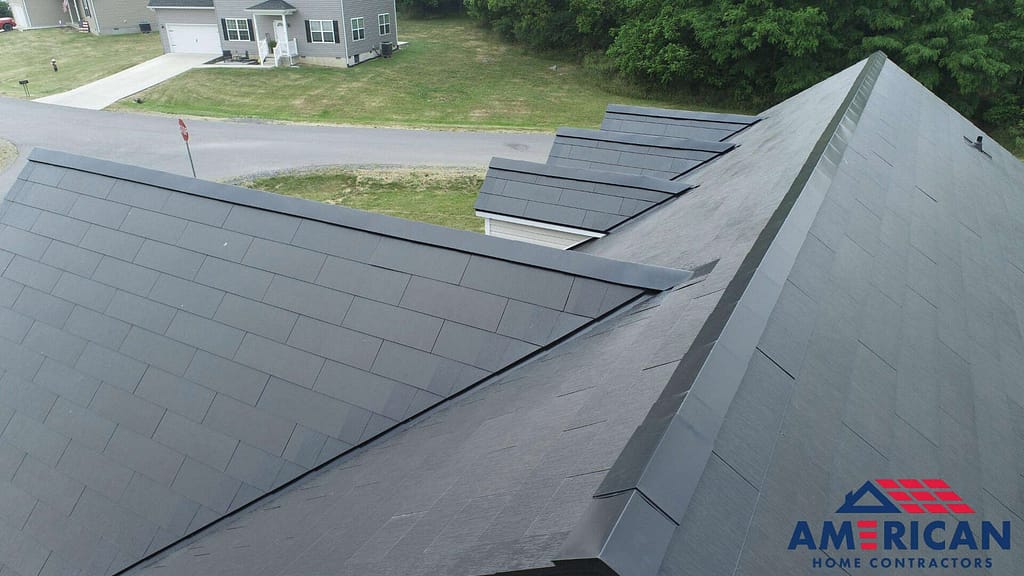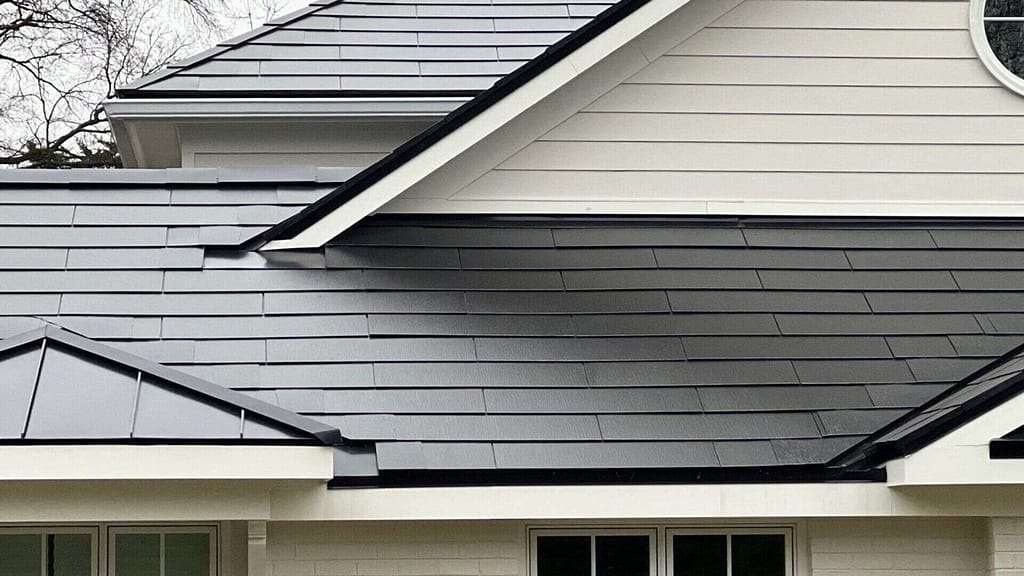
A solar roof transforms sunlight into electricity, offering dual benefits: it powers your home and protects like a traditional roof. This smart solution not only reduces your energy bills but also supports environmental sustainability, seamlessly integrating with your home’s aesthetics.
Table of contents
Understanding Solar Roofs

A solar roof is a type of roofing that generates electricity from sunlight. Unlike regular roofs that just cover and protect your house, solar roofs are active, turning sunlight into power that you can use in your home. This dual functionality means you get the protection of a traditional roof while also cutting down on your electricity bills.
Components of a Solar Roof
Solar roofs are made up of several key components:
- Solar Tiles or Shingles: These are the main parts that look like regular roofing materials but have solar cells built into them. They are designed to blend in with your existing roof while capturing sunlight.
- Inverters: These devices convert the direct current (DC) electricity that the tiles generate into alternating current (AC), the type of electricity homes use.
- Wiring: Hidden beneath the tiles, wiring connects the solar cells to the inverters and your home’s electrical system.
- Mounting Equipment: This includes all the frames and supports that hold the tiles in place on your roof.
How Do Solar Roofs Work?
Solar roofs do two big jobs. First, they act like any roof, protecting your home from rain and sun. But they also do something extra special—they turn sunlight into electricity. Let’s explore how these smart roofs work and how they connect to the other electrical parts of your house.
Technology Behind Solar Roofs
Solar roofs use a technology called photovoltaics, or PV for short. This technology involves solar cells, which are small units made from materials like silicon. When sunlight hits these solar cells, it causes them to generate an electrical charge. This process is called the photovoltaic effect. Each shingle on your roof contains these cells and when sunlight shines on them, they produce electricity. This is how your roof can turn sunlight into power that you can use inside your home.
Integration with Home Energy Systems
After the solar tiles generate electricity, your home needs to use it. Here’s how it integrates with your home’s energy systems:
- Inverter Connection: First, the direct current (DC) electricity from the solar tiles goes to an inverter. The inverter’s job is to change this DC electricity into alternating current (AC), which is the type of electricity used in homes.
- Electrical Panel: From the inverter, the AC electricity travels to your home’s electrical panel (also known as a breaker box). This panel distributes the electricity to where it’s needed in your home.
- Utility Grid Connection: Most solar roof systems connect to the local utility grid. This connection lets your solar roof send excess electricity back to the grid, often earning you credit on your electric bill. It also ensures you have power at night or during cloudy days.
Check out this video that answers frequently asked questions about Tesla’s solar roof.
Benefits of Installing a Solar Roof
Installing a solar roof brings several great advantages to your home. It’s not just about saving money on electricity; it’s also about helping the environment and making your house look good. Let’s dive into how a solar roof can make a big difference in these areas.
Energy Efficiency
One of the top reasons people choose solar roofs is to cut down on their electricity bills. They produce electricity directly from sunlight, which you can use to power your home. This means you’ll need less electricity from the utility company, which reduces your monthly bills.
Environmental Impact
Solar roofs are great for the environment. By using the sun’s energy, they produce clean, renewable power. This helps reduce the reliance on fossil fuels, which are common sources of energy but harm the environment. Solar energy doesn’t produce air pollution or greenhouse gases, so it’s a clean way to keep your lights on and appliances running. Plus, it’s sustainable, which means it helps keep the planet healthy for future generations.
Aesthetics and Design
Modern solar tiles and shingles are sleek and can blend well with your home’s existing roof. Some even mimic the look of traditional roofing materials like slate or tile. This means you don’t have to sacrifice style for sustainability.
Installation and Maintenance

Installing a solar roof is a precise process that our team at American Home Contractors handles with expert care. We begin by assessing your current roof to ensure it’s suitable for a solar upgrade. After this initial evaluation, our skilled technicians prepare the roof surface and lay out the wiring that will connect the solar tiles to your home’s electrical system. Then, we install high-quality solar tiles, such as GAF Decotech or Tesla Solar Roofs, making sure each piece fits perfectly and functions correctly. The final step involves connecting the solar roof to the grid, allowing you to start generating your own clean energy. Throughout the process, we keep you informed and ensure everything meets our high standards.
They offer low maintenance and high durability, providing a worry-free investment for homeowners. The solar tiles we use from GAF and Tesla withstand harsh weather conditions and continue to produce energy efficiently for many years. Routine maintenance mainly involves keeping the solar panels clean and free of debris to ensure maximum sunlight absorption. At American Home Contractors, we provide detailed guidance on simple maintenance checks you can perform, and our responsive team is always ready to assist with any maintenance needs
Initial Investment vs. Long-Term Savings
Investing in a solar roof involves upfront costs which include the price of the solar tiles, installation, and any necessary modifications to your existing roof. While the initial cost might seem high, the long-term savings can be significant. By generating your own electricity, you reduce your monthly utility bills. Over time, these savings can offset the initial investment.
Additionally, it is designed to last for decades, allowing you to continue saving on your electricity costs for many years. The exact savings will depend on factors like your local climate and the amount of sunlight your roof receives. Use our solar roof calculator to instantly get an estimate of the cost.
Incentives and Tax Breaks
To encourage the use of renewable energy, many governments offer incentives and tax breaks for solar roof installations. These can significantly reduce the overall cost. For instance, you might be eligible for federal tax credits, which allow you to deduct a portion of the cost from your taxes. There are also often state and local incentives, which can include additional tax breaks, rebates, or grants.
These financial incentives can make solar roofs more affordable and attractive as an investment in clean energy. Always check with a local tax professional or solar consultant to understand the specific incentives available in your area.
Conclusion
As we finish talking about solar roofs, we see they do a lot more than just lower energy bills. Solar roofs fit right into your home’s look while helping you save money. They use smart technology to make sure each roof is not only effective but also looks good.
Choosing a solar roof helps the environment and saves you money in the long run. With helpful incentives and simple upkeep, getting a solar roof is easy and beneficial. By installing a solar roof, you’re making your home greener and keeping your costs down. It’s a wise choice that pays off now and later, making your home a leader in energy efficiency and style. Switching to solar means more than just a new roof—it means moving towards a better future.
Fact checked by Adrian Catolico – 6/21/2024